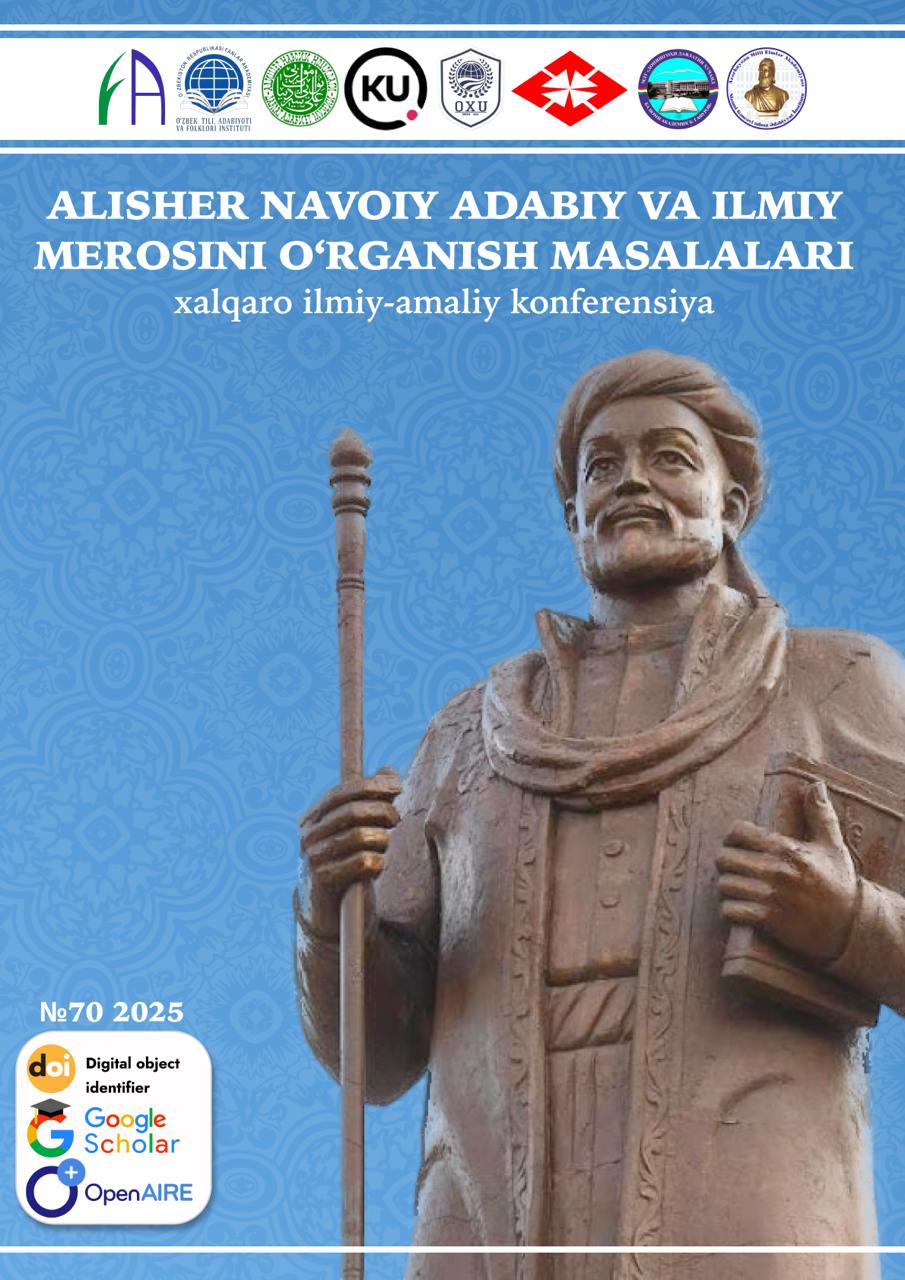TYPES OF SIMILES ACCORDING TO THE CONTENT IN ALISHER NAVOY’S EPIC “FARHAD AND SHIRIN”
Keywords:
negative similes, ironic similes, satirical similes, contrasting similes, grammatical similes, logical similesAbstract
This article delves into the study of simile constructions found in Navoi’s works and their significance in the evolution of language. The primary objective of this research is to examine the distinctive characteristics of simile structures and to uncover the linguistic and cultural dimensions present in the simile devices employed in Navoi’s epic “Farhod and Shirin”. Additionally, the study reviews global linguistic research on simile constructions and synthesizes the perspectives presented. The research employs linguistic analysis alongside descriptive, comparative, lexicographic, semantic-stylistic, and linguostatistical analysis methods to conduct a comprehensive examination of the topic.
References
1. MacArthur, F., & Alejo-González, R. (2023). Beyond idioms, the use of metaphor in ELF academic settings: A comprehensive review. Journal of Pragmatics, 219, 48–57. https://doi.org/10.1016/j.pragma.2023.11.002
2. Wijesiriwardene, T., Wickramarachchi, R., Gajera, B., Gowaikar, S., Gupta, C., Chadha, A., Reganti, A. N., Sheth, A., & Das, A. (2023). ANALOGICAL - a new benchmark for long text analogy evaluation in large language models. Lingua, 3534-3549. https://doi.org/10.18653/v1/2023.findings-acl.218
3. Mukramov M. Analogies in Uzbek language. – Toshkent.: Fan. 1976, 88 pages.
4. Alisher Navoiy. Farhod and Shirin. – Tashkent: Gafur Gulom, 2020.
5. Shamsiyev Porso. Dictionary of Navoi's Works. – Tashkent: Gafur Gulom. 1972, 782 pages.
6. Jones, M., & Love, B. (2006). Beyond common features: The role of roles in determining similarity☆. Cognitive Psychology, 55(3), 196-231. https://doi.org/10.1016/j.cogpsych.2006.09.004


